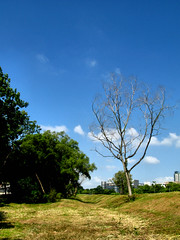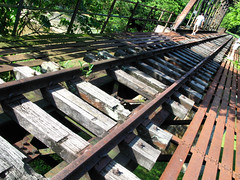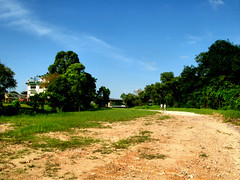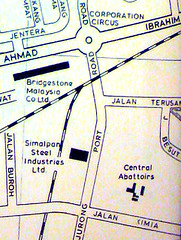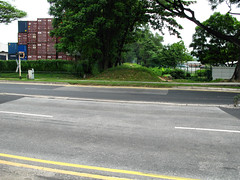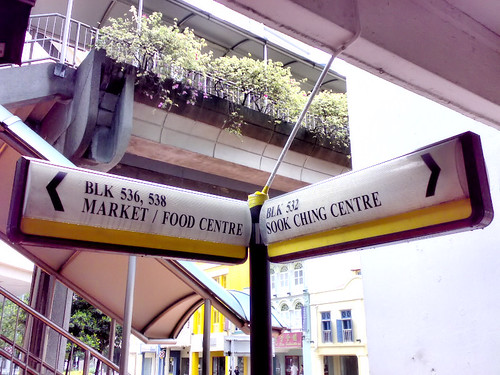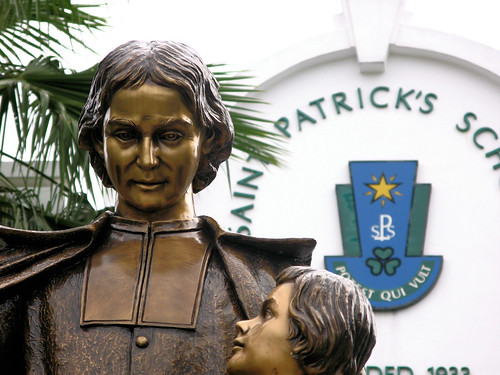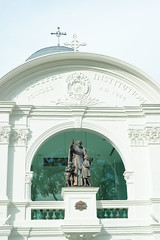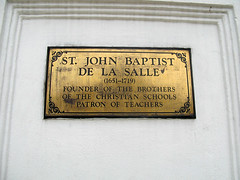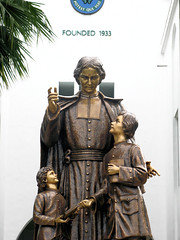My last journey took me to Teban Flyover where my wearied spirit squeezed out the remaining energy and pushed on to Jurong Entertainment Centre. There, an oasis and a cute cheeseburger marked the end of my 'infantry' mission.
That was five months ago.
Last Saturday, a kind offer from Chun See brought a few of us FOYers together for a visit to the Old Jurong Line. It was enjoyable when you got to operate like cavalry (thank Chun See for his Toyota Wish) and had running commentary from an ex-kampong boy of the trees and plants along the way. We were also treated to Peter's interesting life accounts over lunch at the former Jurong Ice Skating Rink and I'm grateful for his patient sharing of personal research on topics related to WWII and old railway. My appreciation goes to the oldies.
For me, the trip was like visiting an old friend whom you have not seen for - in this case - half a year. People change, they grow bald as they get older, but the Jurong Line landscape grows in the opposite way. What was once upturned soil is now a verdant grass patch.
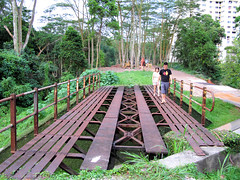
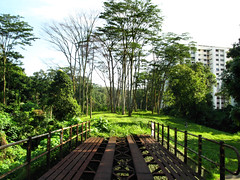
Left: Sunset Way Railway Bridge on June 1, 2008.
Right: The same place, on December 20, 2008.
Turning bald (or bushy) is just external change. We are not oblivious of what happens internally. I think/hope/believe I'm more courageous now when it comes to crossing a railway bridge. Previously I was scared stiff and the mind conjured doomsday scenarios to deter my legs from moving forward, you can read my adventure here. I have my Kanchanaburi trip to thank for in this case. I self-trained by crossing (only twice) what is arguably the most famous railway bridge in the world.
Don't stop, never give up. It helps not to look down at the river below when crossing the Sungei Ulu Pandan Railway Bridge. Chiong ah!
Some places are just too memorable to be forgotten, even when they are covered with grasses now. When I resumed my journey from Sungei Ulu Pandan Railway Bridge the last time, I started from the Ulu Pandan Park Connector. There was no way for me to get onto the track from the pavement below. So I walked until the Clementi Ave. 6 Flyover where there was a clearing. The clearing is gone today.
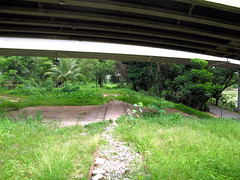
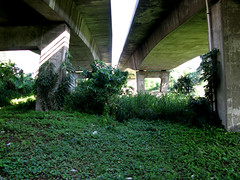
Left: The clearing to the right of the railway track on July 19, 2008.
Right: The clearing no more on December 20, 2008.
The stretch after the flyover had construction activity the previous time so I had to skirt around the area. This time there was none so I could walk uninterrupted to ITE College West (Clementi). With this stretch completed, I have officially 'conquered' the Old Jurong Line between the railway bridge at Sungei Ulu Pandan and Teban Flyover.
I broke new ground. I also saw what I thought were new landmarks. But I'm not sure, perhaps I wasn't paying attention last time.
I also saw new use for old landmark. I'm referring to the Sungei Pandan Railway Bridge.
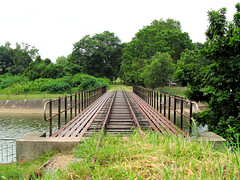
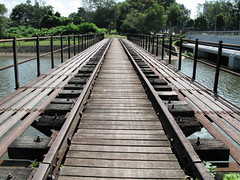
Left: The Sungei Pandan Railway Bridge on July 19, 2008.
Right: The same bridge on December 20, 2008. Can you see what has changed?
I didn't know why the authorities were so nice as to build a boardwalk until I consulted the street directory. Fact is, the disused railway bridge is the only link between the divided Ulu Pandan Park Connector.

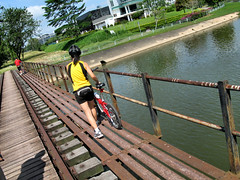
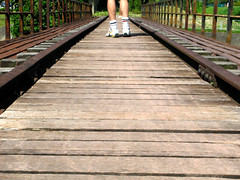
Left: Apologies to the lady. She had to use the sidewalk as we were blocking her way. I thought I saw the man in front turning back for her after he crossed the bridge, so sweet!
Right: FOYers, guess whose?
Railway Track Excavation
After a hearty lunch at former Jurong Ice Skating Rink, Chun See led a cavalry expedition to the rest of the Old Jurong Line. One of our stop points was at Jurong Port Road where, according to the old street directory, a railway crossing used to exist. The oldies were right also in claiming, while on the way back, that Bridgestone used to stand on the current SPH Print Centre. You can see this validated by the street directory.
It was at Jurong Port Road that I saw my first track excavation.
I was excited, not over the discovery of old tracks since I already knew of a crossing at the location, but that of the nature of the excavation. Tracks do get unearthed like the stretch before Sunset Way but the digging happens on undeveloped forest floor. Coupled with the fact that the stretch is relatively well known, as least from the old street directory, the discovery, if you may call it, is not very exciting. In comparison, check out my photo of the place in September, sans excavator. A pavement was built over the tracks (that they managed to dig out the tracks prove it). That it was next to the road made it more significant.
I was reminded of railway structures turning up surreptitiously over the years, like bridge foundations during the construction of Somerset MRT and underground tracks next to Buona Vista MRT, not to forget the grand-daddy of Singapore Railway - the Tank Line - parts of it may still be buried underneath the road.
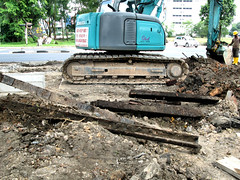
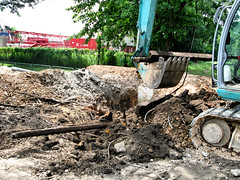
Tracks and sleepers excavated.
While not an expert on railway stuff, I can still recognize a track when I see one dug out. Those in my excavation photos looked like iron pickets used by SAF or what is called in general angle iron stakes. Thank Johnny for the name.
Angle iron stake. They even felt like iron pickets when I tried to lift one up. The track actually budged! I wanted to bring a souvenir home but found nothing suitable.
Before I end, here's a short video of the excavation. The process was pretty heart-wrenching. The excavator was trying to scoop the track up but to no avail. The track just refused to surrender. In the end machine triumphed. I wonder what happened to the tracks and sleepers afterward.





